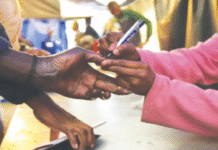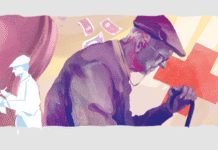
I have already spent the biblically allotted three score years and ten on this planet, and of these, roughly two-thirds have been associated with Dhaka University, first as a student and then as an academic. When I went up in 1969, both the campus and the country at large were convulsed by the onset of the mass upsurge that, within a couple of years, would deliver a blood-soaked, new-born nation-state. I will not go into the history of the Liberation War in which so many of us played small roles—it has been written about by many and will be written about by many more. I have been asked instead to highlight the role of the university in the development of Bangladeshi literary culture.
Literary culture implies more than the aggregate of literary works. It involves recognition of the role of socio-political and economic forces as well as non-literary cultural factors in shaping literary practices. In discussing “Literary Culture in Bengal”, in Sheldon Pollock’s anthology “Literary Cultures in History: Reconstructions from South Asia”, Sudipta Kaviraj argues that Bengali literary culture excludes Bengali Muslims and their writings as alien, and concludes that modern Bengali literary culture is a “Hindu affair”. This is the view from Kolkata that Dhaka will reject as both myopic and blinkered.
 For all latest news, follow The Daily Star’s Google News channel.
For all latest news, follow The Daily Star’s Google News channel.
If we go back to the origins of modern Bengali literary culture in Kolkata, we realise the pivotal significance of the Hindu College (subsequently Presidency College, and now a university), the first institution of modern, western education for Indians. It gave birth to Young Bengal and the so-called Bengal Renaissance. Has Dhaka University played a comparable role in the creation of a Bangladeshi literary culture? Let us examine the record. We can start by identifying three historical periods: Colonial; Post-Partition; and Post-Liberation.
In colonial Dhaka, the university might have seemed to be, as far as literary culture was concerned, an outpost of Kolkata in the backwaters of East Bengal. But it was already set upon a different trajectory. The Buddhir Mukti Andolan, or Freedom of Intellect Movement, was centred on Dhaka University and, with Kazi Nazrul Islam as chief mentor, brought together Muslim intellectuals and writers who advocated an enlightened, rational approach in social and cultural matters and opposed religious obscurantism of all sorts. Its inception is marked by a proposal made in 1926 by Professor Abul Hossain of the Economics department to found the Muslim Sahitya Samaj, which was joined by Kazi Abdul Wadud, Muhammad Shahidullah, Kazi Motahar Hussain, Abdul Qader, and Abul Fazal, all of whom came to be regarded as intellectual luminaries in the course of time.
Buddhadev Bose began his literary career in the dual role of writer-editor while studying at Dhaka University. The monthly “Pragoti”, which he edited, published a bevy of writers who are highly regarded in the Bengali canon. Besides Buddhadev himself, the magazine published Kazi Nazrul Islam, Jasimuddin, Jibanananda Das, Bishnu De, and Mohitlal Majumdar. Kazi Nazrul Islam’s visits to Dhaka always brought him to the university. On one visit, he stayed at Kazi Motahar Hussain’s university residence, and met Buddhadev and other young writers.
Jasimuddin, who was on the faculty of the university from 1938 to 1943, occupies a unique niche in Bengali letters. If one considers the dominant literary current of the day, he was swimming against the tide. He was alone in his robust commitment to the pastoral mode of verse. Interestingly, he was not a naïve poet by any means, and was “modern” in the sense of being a self-conscious artist aware of the implications of what he was doing. He regarded modernists like Buddhadev as “artificial” and imitative, following Western fashion, and not truly original. He believed that he was writing poetry that truly reflected the realities of Bengali society, which was predominantly rural.
With the Partition of 1947, a number of writers and academics moved from Kolkata to Dhaka, revitalising its literary scene. Useful insights into the literary scene immediately after Partition on the university campus, and in the country as a whole, can be gained from Professor A.G. Stock’s “Memoirs of Dacca University: 1947-1951”. Her supple prose captures well the excitement of decolonisation as well as the fresh anxieties and tensions brewing in the land.
We get a vivid impression of a new literary culture in the making, with Munier Chowdhury, an avowed communist then, writing socially committed plays; Jasimuddin taking Professor Stock to Mirpur to a milad which turned out to be quite unconventional, with religious songs followed by folk songs, including Jasimuddin’s own compositions, and then folk dances; a university graduate in English collaborating with Professor Stock to translate the work of Muslim poets into English. Some of these were published in “New Values”, a journal whose founder-editor was Dr. K.S. Murshid of the English department. The poems tackled included some by Kazi Nazrul, as well as old puthis, ballads like “Dewan Medina”, and the work of seventeenth-century Muslim Bengali Vaishnavites.
Here we have a clear difference between the Bengali literary culture seen from the perspective of Kolkata, based on a principle of exclusion, and the Bangladeshi literary culture, which is inclusive, making room for religious and ethnic minorities, and including the whole of the literature in Bangla—including a wealth of writings by a host of precolonial Muslim writers: Sayeed Sultan, Paragal Khan, Doulat Qazi, Alaol, and many others.
Then we come to the literature taking shape in Dhaka, around the university, from mid-century onwards. An explosive event in the development of our literary culture was the Language Movement, culminating in the bloodbath of Ekushey February (February 21, 1952). The movement centred on the university and associated institutions like the Dhaka Medical College. Let me point out instances of the direct literary impact of the killings. Alauddin Al Azad published his poem “Smriti Stambho”. Mahbub ul Alam Chowdhury of Chattogram published the poem “Kadte Ashini, Fashir Daabi Niye Eshechhi”. In 1953, Hasan Hafizur Rahman edited an anthology titled “Ekushey February”, which included writings by Shamsur Rahman, Abu Zafar Obaidullah, Fazle Lohani, Abdul Gani Hazari, and others. Abdul Gaffar Chowdhury’s poem “Amar Bhaier Rokte Rangano” was set to music and sung for the first time by Dhaka College students at Britannia Cinema. The present score of the song was composed in 1954.
The Language Movement not only inspired many poems, songs and stories, but also helped create a new literary culture for Bangladesh, with its own distinctive identity. The Sanskriti Sangsad of the university put on many cultural shows including plays by Munier Chowdhury and Anis Chowdhury. The Drama Circle put on plays with actors of both genders. The Dhaka Government Art School, which later became a college, and more recently an institute of the university, has always played a vital role in the cultural movements of the country. We need to emphasise that Dhaka University should be seen as an extended family, including the Medical College, the Art College (now Institute), and BUET (which began as the Ahsanullah School of Engineering, affiliated to Dhaka University). All of them have been associated with the development of Bangladeshi literary culture.
It can be argued that the Language Movement grounded Bangladeshi writers in the country’s socio-political realities, and so, even when they absorbed the lessons of cosmopolitan modernism or postmodernism, they were never entirely deracinated souls. If they avowed nihilism, their stance signified a critique of the socio-political status quo. “Kanthaswar”, a journal launched by Abdul Labu Sayeed, the nihilistic magazine “Na”, and the “Sad Generation” movement played a significant role in the development of this trend.
With the political movements of the sixties leading up to the independence war, poets and writers became engaged, politically committed even if they were not members of any party. The university campus became a place where writers and artists gathered for stimulating addas. In independent Bangladesh, organisations like the Left-wing Lekhok Shibir included university personalities and held their meetings on the campus, which for many years has also been the venue of a poetry festival every February. Many little magazines have appeared from the university, like the late Khondakar Ashraf Hossain’s “Ekobingsho” and Naim Hasan’s “Nirantar”, not to mention officially sponsored literary journals and socially committed periodicals like Emeritus Professor Serajul Islam Choudhury’s “Natun Diganta”. It is important that they are collected and given proper critical attention. One can be sure that when a history of Bengali literary culture is written 50 years from now, the role of Dhaka University will be seen as no less significant than that of the Hindu College.
Kaiser Haq is a poet, translator, essayist, critic, academic and freedom fighter. He currently serves as a Professor of English at the University of Liberal Arts Bangladesh (ULAB).










